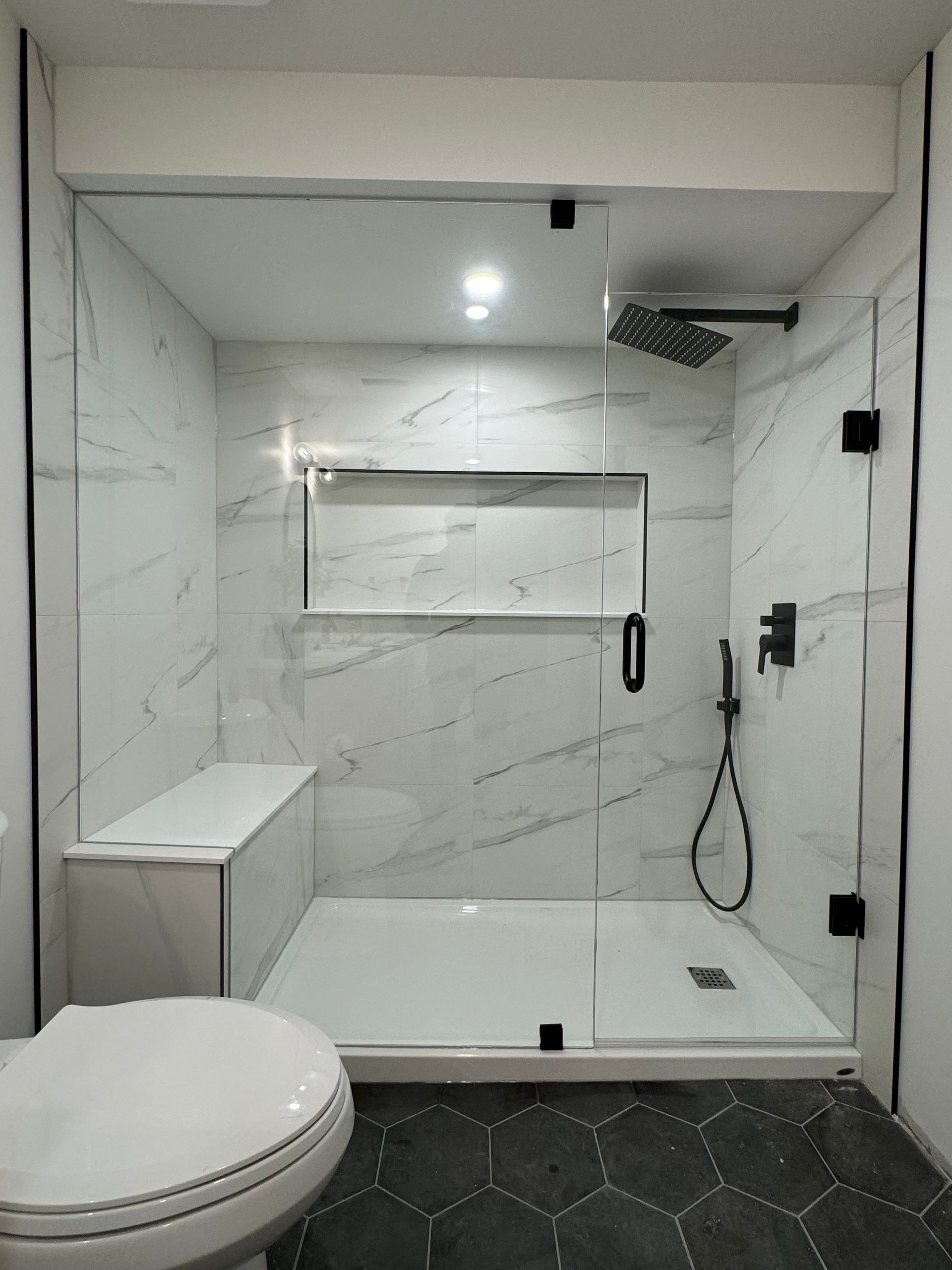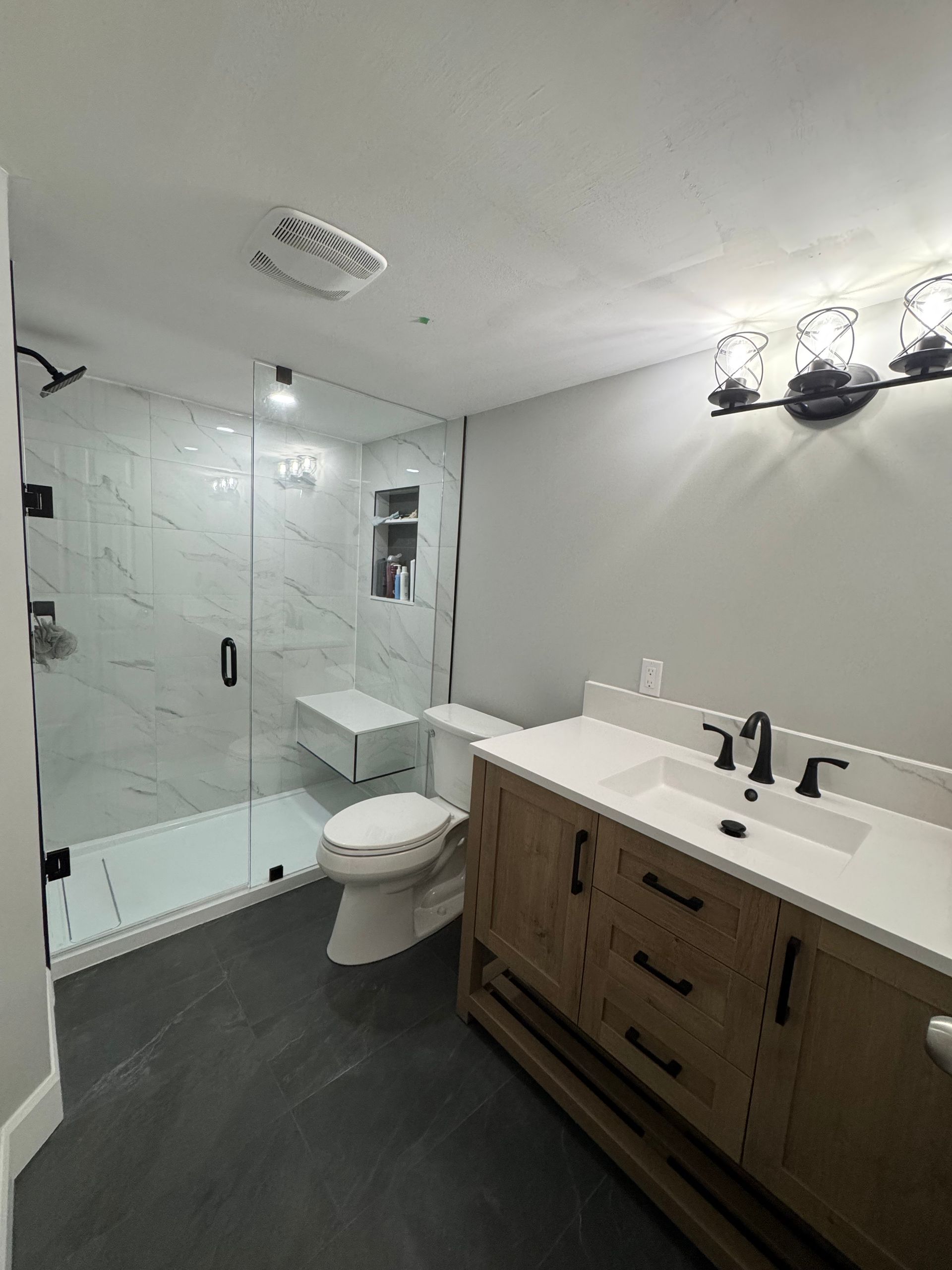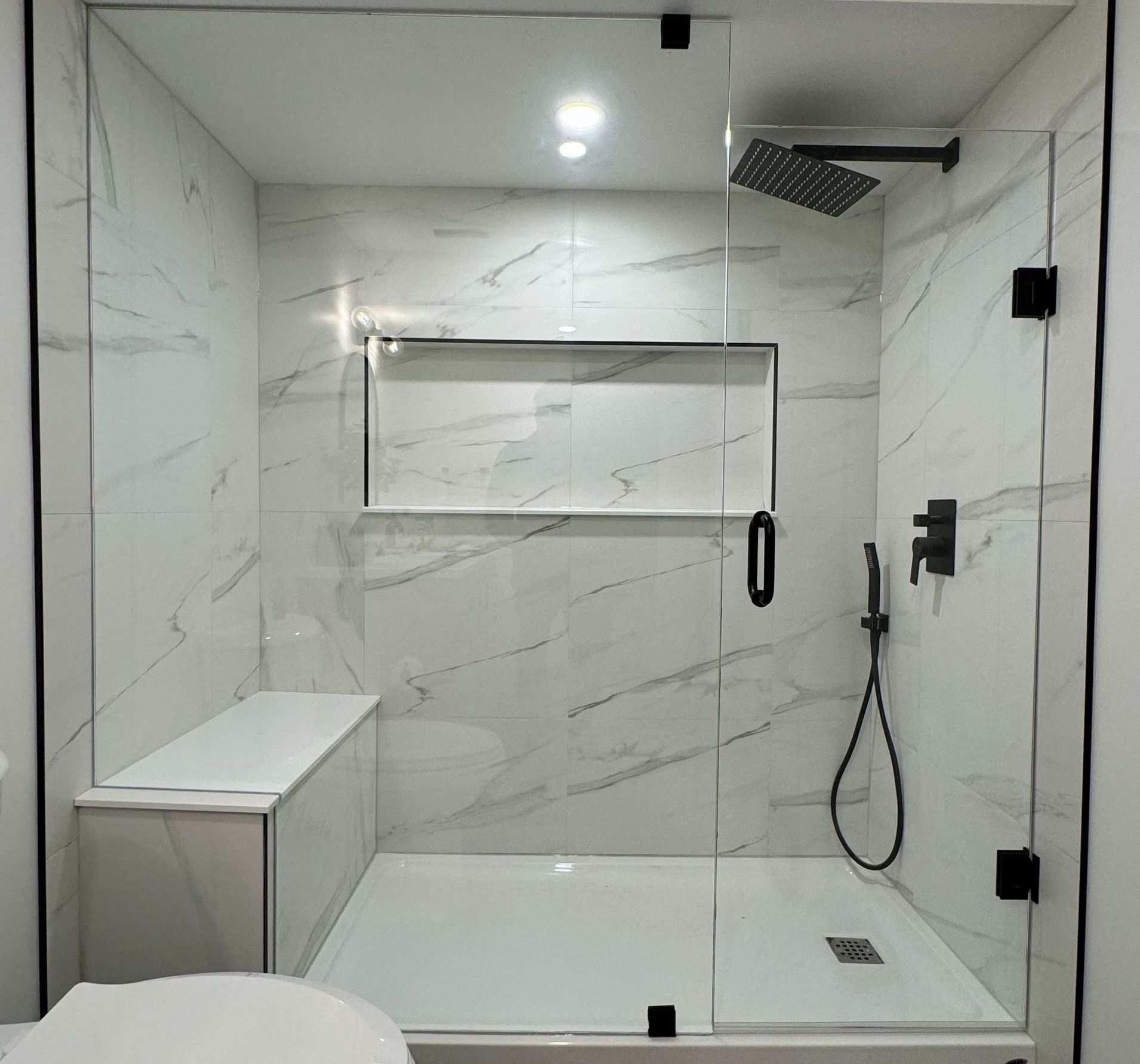How do I choose the right lighting for a bathroom renovation?
This is a subtitle for your new post
How Do I Choose the Right Lighting for a Bathroom Renovation?
Lighting is one of the most important, yet often overlooked, elements of a bathroom renovation. The right lighting not only improves visibility but also enhances mood, highlights design elements, and significantly influences safety. According to research from the National Lighting Bureau (2023), inadequate lighting contributes to 21% of bathroom-related falls among adults over 65, emphasizing the essential role of proper illumination in high-risk areas. Beyond safety concerns, lighting also affects the perception of space, color, and texture, making it a critical factor in the aesthetic success of any bathroom renovation. A 2024 Houzz survey found that 72% of homeowners consider lighting a top priority when updating or renovating their bathrooms, reflecting its dual functional and decorative importance.
Bathrooms serve multiple purposes—ranging from daily grooming routines to relaxing or even therapeutic bathing—each requiring tailored lighting intensities. These intensities are measured in lux, the standard unit for illuminance, which quantifies the amount of light per square meter. Task-oriented areas, such as vanities, require 400–500 lux to ensure precise visibility for shaving, makeup application, or hair styling. Ambient lighting, designed to create overall illumination for the space, is most effective at 150–200 lux, providing general brightness without harsh shadows. Shower zones, corners, and other peripheral areas may only require 100–150 lux, but it is crucial to maintain consistent, glare-free illumination to prevent accidents and create a seamless visual environment. Strategic layering of light—combining ambient, task, and accent sources—ensures that each functional zone is optimized for both utility and comfort.
Moreover, the color temperature of light plays a significant role in how the bathroom feels. Warmer tones (2700K–3000K) create a relaxing and spa-like atmosphere, ideal for soaking tubs and ambient lighting, while cooler tones (3500K–5000K) enhance clarity in task areas, supporting precision and reducing eye strain. Homeowners who neglect to balance these aspects may find that even a beautifully designed bathroom feels cramped or awkwardly lit. Studies also suggest that properly layered lighting can increase the perceived size of a room by up to 20%, making careful planning of fixture placement a crucial step in both small and large bathroom renovations.
Evaluating Your Space: Layout, Size, and Natural Light
A scientific approach starts with analyzing the architectural space and existing light conditions. Small bathrooms with low ceilings require higher light output to avoid shadows that distort depth perception. For instance, a 5x7-foot bathroom may require 4–6 LED recessed lights of 8–10 watts each, spaced every 4–5 feet for uniform distribution. In contrast, a 12x15-foot master bathroom often needs layered lighting: a central chandelier with 12–15 watts per square foot, vanity task lighting at 400–500 lux, and accent lighting for features such as shelving or bathtubs.
Natural light also plays a scientific role in circadian rhythms and color perception. Windows or skylights contribute to Daylight Factor (DF), which measures daylight penetration into a space. Studies suggest a DF of 2–5% is sufficient for functional bathroom use, while higher DF can improve mood and energy levels. For bathrooms lacking natural light, daylight-simulating LEDs (5000–6500K) can mimic sunlight, maintaining visual comfort and accurate color rendering.
In addition to fixture placement and natural light considerations, reflective surfaces and material selection significantly influence lighting effectiveness. Mirrors, glossy tiles, and light-colored paint can increase illuminance by 15–30% by reflecting both natural and artificial light throughout the space. Conversely, dark or matte surfaces absorb light, necessitating higher wattage or additional fixtures to achieve the same visual clarity. Research in architectural lighting design shows that a combination of reflective materials and strategically positioned lighting can reduce energy consumption by up to 20% while maintaining optimal brightness levels. Moreover, integrating dimmable controls and zoned lighting circuits allows for flexible adjustment of lux levels according to specific activities, whether grooming, relaxing, or cleaning, further enhancing both functionality and energy efficiency in modern bathroom renovations.
Choosing the Right Fixtures and Bulbs
Modern bathroom renovations rely heavily on LED technology, backed by numerous studies. LEDs are 80% more energy-efficient than incandescent bulbs, and their Color Rendering Index (CRI), which measures how accurately a light source shows colors, can exceed 90—crucial for makeup application and grooming tasks. In comparison, standard fluorescents often have a CRI below 70, which can distort skin tones and paint colors.
Light temperature, measured in Kelvin (K), significantly impacts human perception and mood. Cool white light (4000–5000K) improves focus and alertness, beneficial for shaving or makeup application. Warmer light (2700–3000K) stimulates melatonin production, promoting relaxation in spa-like settings. A 2022 study in the Journal of Environmental Psychology found that participants exposed to warmer lighting in bathrooms reported a 25% greater sense of relaxation, emphasizing its psychological benefits.
Placement and Layering Techniques
Scientific research on light distribution shows that improper fixture placement can cause shadows, glare, and visual fatigue. Vanity lighting should be mounted at eye level (65–70 inches from the floor) and evenly spaced on both sides of the mirror to minimize facial shadows. Overhead lighting should complement, not compete, with task lighting. Recessed lighting rated IP65 or higher is recommended for wet zones to prevent moisture-induced electrical hazards.
Layering light—combining ambient, task, and accent lighting—improves both functionality and aesthetics. Task lighting at 400–500 lux, ambient lighting at 150–200 lux, and accent lighting at 50–100 lux creates a scientifically balanced environment. Smart LED systems now allow tunable white light, adjusting intensity and color temperature throughout the day to support circadian health. Research shows this can reduce visual strain by 30% in morning grooming tasks.
Safety and Electrical Compliance
Bathrooms are considered wet locations, so lighting must comply with safety standards. According to the Canadian Electrical Code, fixtures near showers, tubs, and sinks must be damp- or wet-rated and grounded properly. Using motion sensors or dimmers reduces energy use by up to 50% while enhancing safety. Installing multiple independent circuits for lighting prevents outages and allows separate control of ambient, task, and accent zones—a strategy supported by the Illuminating Engineering Society (IES).
Current Trends in Bathroom Lighting
Recent bathroom renovation trends emphasize function-driven aesthetics. Wall sconces, integrated LED mirrors, under-cabinet lighting, and ceiling recesses are common. Smart lighting, including app-controlled dimmers and voice-activated systems, is growing in popularity. The Global Smart Lighting Market Report (2024) predicts a 12% annual growth in smart residential bathroom lighting adoption over the next five years, reflecting increasing consumer preference for integrated, personalized lighting solutions.
Collaborating with a professional renovation and plumbing company, like GS Plumbing Solutions, ensures that lighting is installed efficiently, meets safety codes, and complements other bathroom features, from vanities to showers. Combining science, aesthetics, and functionality creates a bathroom space that is safe, visually appealing, and aligned with the latest trends.
Bathroom Lighting Inspiration & Ideas
- Better Homes & Gardens – 30 Bathroom Lighting Ideas for Every Decorating Style
Explore a diverse range of lighting options, from crystal chandeliers to antique sconces, tailored to various bathroom aesthetics.
👉 https://www.bhg.com/bathroom/remodeling/planning/bathroom-lighting-ideas/ - The Spruce – How to Light Your Bathroom Like a Pro
Learn how to layer lighting effectively with tips on sconces, pendant lights, and LED mirrors to enhance both functionality and ambiance.
👉 https://www.thespruce.com/bathroom-lighting-ideas-8769764 - Mullan Lighting – Essential Guide to Bathroom Lighting
Gain insights into creating a balanced lighting scheme, including ceiling fixtures, accent lighting, and understanding IP ratings for safety.
👉 https://www.mullanlighting.com/us/blog/essential-guide-bathroom-lighting/
🛍️ Where to Shop for Bathroom Lighting
- IKEA Canada – Bathroom Lighting
Browse a variety of modern and traditional bathroom light fixtures, including vanity lights, ceiling lights, and mirrors with integrated lighting.
👉 https://www.ikea.com/ca/en/cat/bathroom-lighting-10736/ - The Home Depot – Bathroom Lighting
Find an extensive selection of bathroom light fixtures, from vanity lights to chandeliers, in various styles and finishes.
👉 https://www.homedepot.com/c/bathroom_lighting - Rejuvenation – Bathroom Light Fixtures
Discover stylish vanity lights, sconces, and pendant lights that combine charm and functionality for your bathroom space.
👉 https://www.rejuvenation.com/shop/bath/all-bath-lighting/








